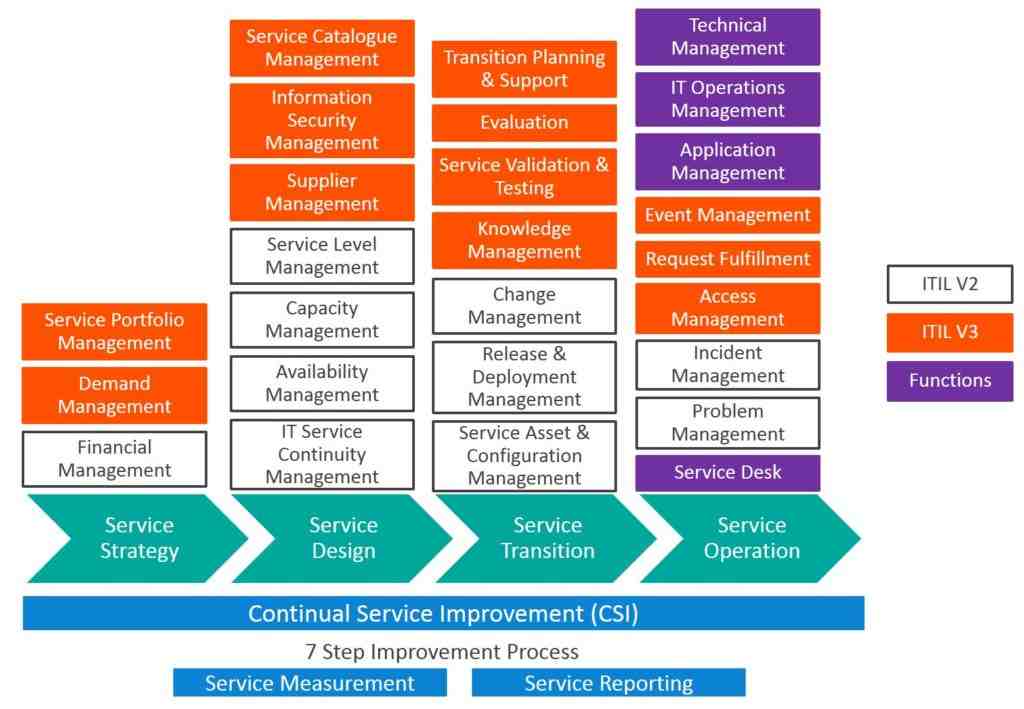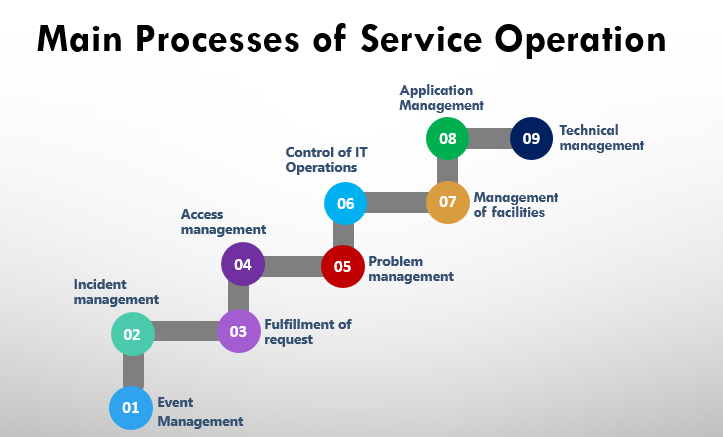5 ITIL Life Cycles You Should Nail for Running IT Services Smoothly
ITIL or IT Infrastructure Library is a collection of the best possible practices to deliver IT-enabled services. It is one of the most systematic approaches toward enhancing customer relations, mitigating risks, and setting up cost-efficient practices in IT environments. The framework allows an IT ecosystem to thrive and effortlessly adapt to changes.
If you are already an aspiring ITIL practitioner, you might be familiar with various ITIL life cycles. Built around these cycles to define the processes for IT service management, the life cycles make an integral part of the framework.
Why is ITIL Important?
If you look at the evolution of the ITIL framework, it is evident that what exists today is the best of all the versions combined and the modifications. ITIL 4 is a refined, clean set of IT practices. Almost all sorts of transactions and trades are dependent on ITIL today; it helps organizations guarantee quality outcomes and good results.

Source: DRAGON1
ITIL concepts act as a common language that ties the IT team together to leverage tools and processes to increase overall productivity. ITIL basics make up the practical foundation for an IT team to use physical and digital resources to align themselves with the organization’s goals.
Here is why an ITIL framework is important in an organization:
- ITIL framework aligns IT services with business needs
- It increases customer satisfaction and improves the delivery of services
- The framework minimizes costs and improves the use of resources
- It ensures the visibility of IT assets and costs
- It enables better mitigation of business risks
- It supports business changes with a stable IT environment
5 ITIL Life Cycles You Must Nail for Smooth IT Services
What are ITIL life cycles? Why are they important? ITIL life cycle phases collectively help an IT team give due importance to the control and coordination of various processes, functions, and systems that go into developing and delivering services. They help professionals focus on the right processes and management activities.
The ITIL life cycle has five stages. They are:
1) ITIL Service Strategy
Service strategy is at the core of ITIL life cycles. This stage defines the policies that service providers need to establish to align themselves with the organization’s goals. It is all about devising an efficient strategy to meet business requirements and to beat the competition in the market. This stage intrinsically needs to be cost-effective while not compromising the quality of service the organization provides. It aims to clearly articulate the creation and delivery of IT services.

Source: ITIL Wiki
There are four Ps in service strategy that function as the foundation of this service cycle. They are:
- Perspective – Describing your vision to develop the services
- Position – Comparing your strategy with that of the competitor’s to position the organization in the market
- Plan – Devising the actions to achieve the set objectives
- Pattern – Following the ongoing plan of action, and the organization will run smoothly
The following are the activities performed in the service strategy stage:
- Identifying opportunities and impediments
- Defining the organization’s position in the market
- Planning and executing strategies that align with business goals
- Maintaining portfolio of qualified services
2) ITIL Service Design
This is the stage where the strategies devised in the service strategy stage transform into a solid plan to deliver services. To provide true value to the organization, the IT team needs to design the services around the business needs. ITIL service design gives the right guidelines to develop service management practices.
The ultimate aim is to come up with a design that requires minimal improvement throughout all ITIL life cycles. People are at the core of this service life cycle; it is critical to make sure your team has extensive knowledge about developing and designing services.
The following are the activities involved in this stage:
- Identifying trends and investment opportunities
- Incorporating CSI in all service design activities
- Bringing down total cost of ownership
- Improving the overall quality of IT governance
- Boosting decision-making skills
3) ITIL Service Transition
This stage makes sure that new or revamped services are efficient enough to meet the expectations of the business; these needs already have documentation in the service strategy and service design stages. The team deliberately prioritizes resources required for various processes and manages costs. With quality service transition, the team can enable multiple transitions simultaneously.
ITIL change management is a key activity in this stage when the team systematically manages all changes to minimize risks. ITIL change management’s best practices can help your team quickly adapt to unanticipated requirements. This change could be Normal or Emergency. The Change Advisory Board (CAB) needs to assess and verify normal changes before implementation. However, emergency changes are critical changes that are necessary to fix disrupted services.
The following are the major activities involved in this stage:
- Planning and managing changes
- Providing information about services
- Mitigating risks
- Reducing delays
- Improving expectation for stakeholders
- Improving the control of various service configurations
- Estimating operating costs and time
4) ITIL Service Operation
This stage is for carrying out and coordinating all activities and processes that are necessary to manage and deliver services to customers and business users. It is also responsible for managing the technology that facilitates this delivery. This is a critical stage because it reveals the actual value of the service to the users, customers, and the business itself. All the services provided by the business, the external supplier, and the user fall under the scope of this service life cycle.

Source: eduCBA
ITIL incident management is a critical process in service operation. This process will restore normal operations in times of crisis. Its primary objective is to lessen user and business downtime and implement faster solutions.
The following are the major activities involved in this stage:
- Detecting and filtering various events
- Fixing disrupted services
- Identifying the root causes of problems; taking remedial measures
- Dealing with service requests
- Granting access to authorized users
5) ITIL Continual Service Improvement
This is the stage in which the service provider seeks to learn from the past successes and failures, using quality management techniques. It aims to improve the efficiency of services and increase cost-effectiveness. At this stage, the team assesses processes involved in stages such as service strategy, service design, and service operation to identify areas of improvement.

Source: Abhinav PMP
All sorts of quality improvement activities happen at this stage to enhance the overall quality of IT services. One of the primary objectives of the stage in this life cycle is to guarantee cost-effectiveness in the delivery of services while not overlooking customer satisfaction.
The following are the major activities involved in this stage:
- Reviewing business services and infrastructure
- Evaluating IT processes
- Holding audits, reviews, and assessments
- Defining initiatives that improve processes and services
- Assessing improvement initiatives
- Implementing corrections in improvement initiatives as and when required
How to Achieve Integration of ITIL Life Cycles?
How are the five stages in ITIL service life cycles integrated for continuity?
While moving through the ITIL life cycles, the service provider has to take special care to integrate the cycles smoothly and continuously. This integration is necessary to achieve the objectives of service management and to attain true business value.
How is this integration achieved?
- Service Knowledge Management – The service knowledge management system is the primary tool that enables this integration. This system is a collection of data and knowledge that are necessary to develop and implement various services.
- Continual Feedback – Another technique to ensure the seamless integration of the cycles is using the power of feedback; a cycle of continual feedback flows from one cycle to another. This feedback cycle helps the service provider manage service optimization. Service optimization measurement rests on the value that a business derives from its services.
A certified ITIL practitioner holds the capability to harmoniously execute ITIL practices that set the company on par with global ITSM standards. This is why ITIL practitioners are one of the most sought-after candidates in the global job market. The different levels of certifications increase your competency and help you see the big picture, not to mention the attractive pay scales. With ITIL Foundation certification, a practitioner earns around $148,500 every year.
Do you aspire to join the global pool of certified ITIL professionals? Get started with GreyCampus’s ITIL Foundation Certification training program. It offers a two-day bootcamp and 25 PMI PDUs. The program also provides one-year access to audio/video lectures and simulated tests.
Want To Learn ITIL® Service Lifecycle? Join a Bootcamp Today!